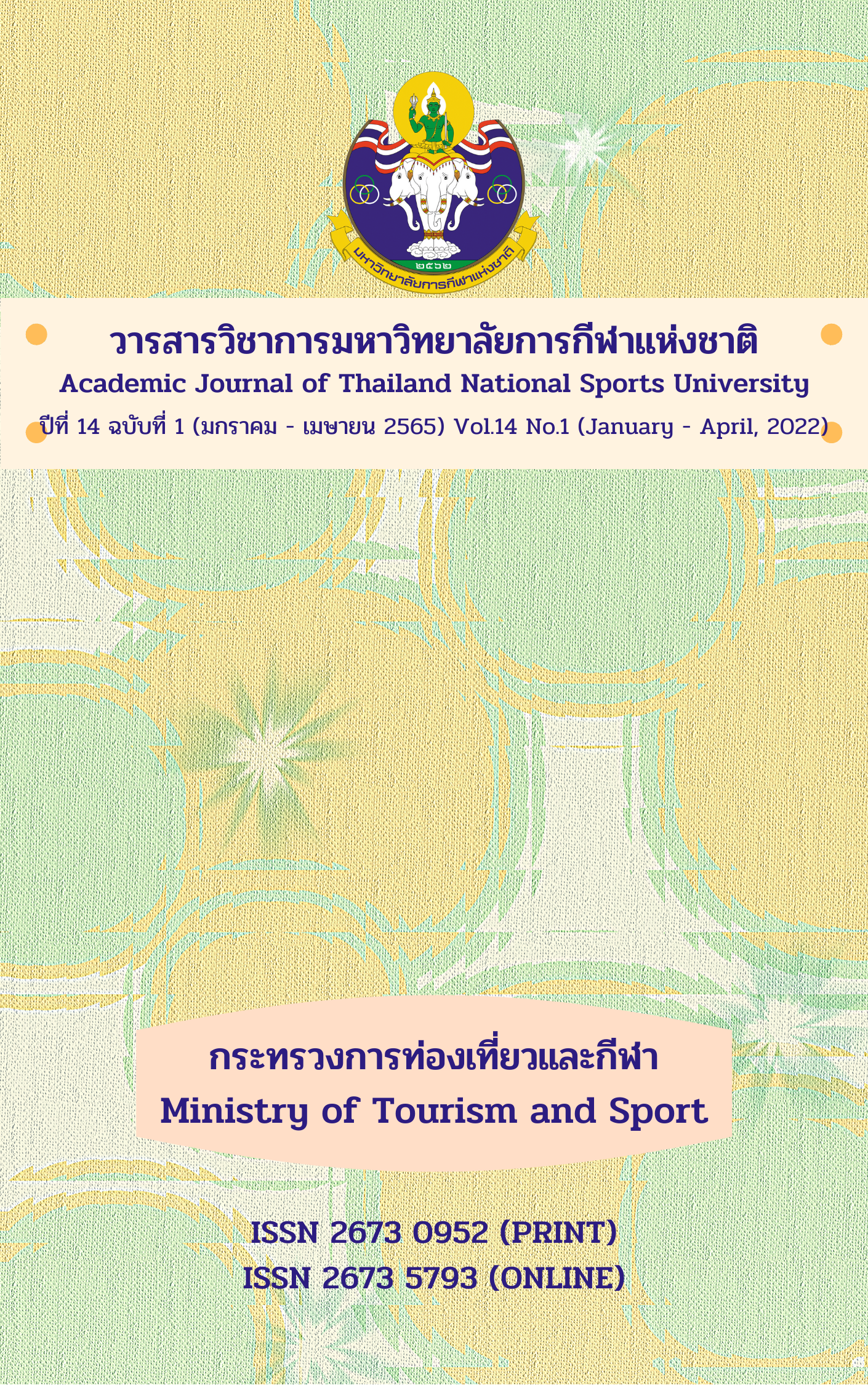TWO - WAY ANOVA WITH REPEATED MEASURES FOR PHYSICAL EDUCATION AND SPORTS RESEARCH
Main Article Content
Abstract
This academic article is written with an objective to present the principle of two-way analysis of variance when there are repeat measurements in research in fields of Physical Education and Sports. The content is divided into three parts: assumption/hypothesis; data analysis; interpretation and report writing.
Two-way analysis of variance when there are repeat measurements in research in fields of Physical Education and Sports is an appropriate test for experimental and semi-experimental research using series of time with controlled groups method or random experiment on the same group method. It can provide research results in one round of tests and reduce mistakes in decisions from repeated tests. Research hypotheses can be written as having interactions between experimental variables and experiment duration which affect dependent variables. Research results can be observed via interactions between experimental variables and experiment duration. If a statistical significance is found, it means that when there is an increase in experiment duration for an experimental variable, dependent variables will differ from another experimental variable.
Article Details

This work is licensed under a Creative Commons Attribution-NonCommercial-NoDerivatives 4.0 International License.
The published article is a copyright of the Academic Journal of Thailand National Sports University. The passage appeared in each article in this academic journal is a perspective of each author which is not related to the journal. Each author is required to be responsible for all components of his/her own article. If there are any mistakes, each author must be responsible for those mistakes on his/her own.
References
Bhunyabhadh Chaimay. (2014). Choosing statistics in data analysis for health science research. Thaksin Journal, 17(1), 68 - 76.
Chaturong Hemara, Umaporn Kong-u-rai, Gosol Rodma, & Bhumip Dhanajyasit. (2020). Training drill for enhancing strength and balance of the elderly with applied yoga activities. Academic Journal of Thailand National Sports University, 12(2), 14 - 25.
Kanlaya Vanichbuncha. (2019). Statistics for Research (12nd ed.). Bangkok: Samlada.
Lund, R., Liu, G., & Shao, Q. (2016). A new approach to anova methods for auto correlated data. The American Statistician, 70(1), 55 - 62.
Natthida Bangmek, Sukanya Charoenwattana, Kanok Panthong, Niromlee Makaje, Ratree Ruangthai, and Pairot Sawangpai. (2020). The effects of a dry - land training program on muscle strength, freestyle 100m, and IGF-I concentration in youth swimmers. Academic Journal of Thailand National Sports University, 12(2), 282 - 296.
Patsatorn Chaipanha, & Jirawat Khanjornsilp. (2020). Effects of double foot jump rope and switching foot jump rope programs towards the endurance of the circulatory and respiratory systems of female high school students at Bangkaew Prachasan School. Academic Journal of Thailand National Sports University, 12(1), 205 - 214.
Siriwan Sukdee, Nattapol Prapart, Thachaphol Sukdee, Wanvisah Saisan Na Ayuthaya, & Thitipong Sukdee. (2018). the effect of core muscles strength training on balance of the dance sport athlete. In Suree Mas Sukkasi (Ed.). 12th National Rambhai Barni Research Conference, December 19th, 2018, Bangkok, Thailand. 624 - 631. Chonburi: A.P. Blue Print.
Sukanya Ritngam. (2020). The effects of cold water immersion on body recovery in relation to lactic acid after the training of under-16-year thailand women’s national football team. Academic Journal of Thailand National Sports University, 12(1), 196 - 204.
Sullivan, L. (2008). Repeated Measures. Circulation, 117(9), 1238 - 1243. doi: 10.1161/CIRCULATIONAHA.107.654350.
Thanumporn Thonglong, & Wichit Chauwes. (2020). Effect of Mi - Plong exercise program on muscle flexibility and range of motion in Thai male students in university. Academic Journal of Thailand National Sports University, 12(1), 61 - 70.
Waro Pheangsawat. (2014). Educational experimental research. Sakon Nakhon Rajabhat University Journal, 6(11), 181-190.


